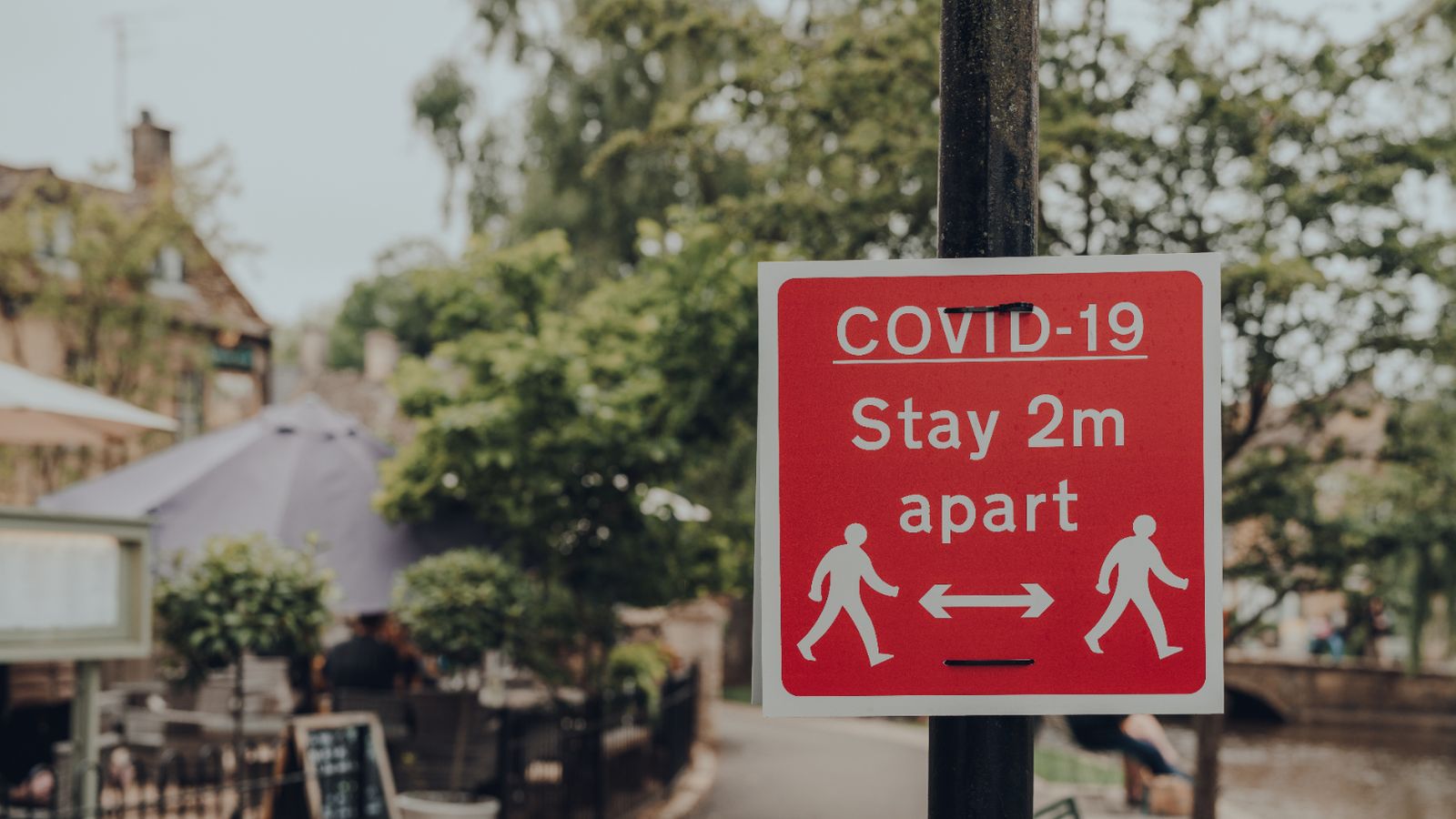The UK has recorded 38,046 new COVID cases and 100 more coronavirus-related deaths in the latest 24-hour period, according to government data.
The figures compare with 38,281 infections and 140 fatalities reported yesterday, and 37,314 cases and 114 deaths this time last week.
Live COVID updates from across the UK and around the world
Another 55,140 people had their first coronavirus jab on Thursday, taking the total who have had one dose to 47,915,768.
And a further 144,936 second doses were administered, meaning 42,379,353 people are now fully inoculated.
Since the pandemic began, 132,243 people in the UK have died within 28 days of testing positive for COVID and there have been 6,666,399 lab-confirmed cases.
It comes as separate data shows England’s R number has shifted slightly to between 1 and 1.1.
Last week, the R value – or reproduction number – was between 0.9 and 1.2.
R indicates the average number of people each COVID-positive person goes on to infect.
A range of between 1 and 1.1 means every 10 people infected will pass on the virus to between 10 and 11 other people on average.
Anything above 1 means the coronavirus outbreak is growing exponentially – but below 1 means it’s shrinking.
Infections in England were also higher in the week leading up to 20 August than in the corresponding week of the second wave, according to the Office for National Statistics (ONS).
It said rates had increased for those from school year 12 to age 24 and for 50 to 69-year-olds, with early signs of an increase for over-70s.
About one in 70 people in England had the virus in that week, compared with one in 80 the previous week.
The estimate was one in 30 for people from school year 12 (15 to 16-year-olds) to age 24: the highest for any age group.
There was a decrease for those aged between two and school year six, and for those aged 25 to 34.
Meanwhile, in Northern Ireland, one in 40 people had coronavirus in the week to August 20, according to the ONS.
Follow the Daily podcast on Apple Podcasts, Google Podcasts, Spotify, Spreaker
That is equivalent to 43,300 people – the highest level since estimates started in October.
The figure was about one in 120 in Wales – the highest level there since 12 February – and about one in 140 in Scotland, up from one in 200 in the previous week.






















